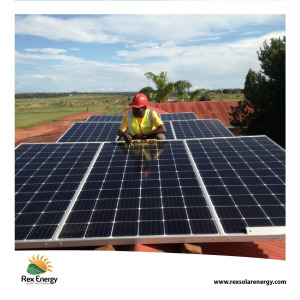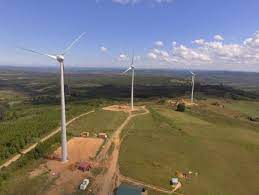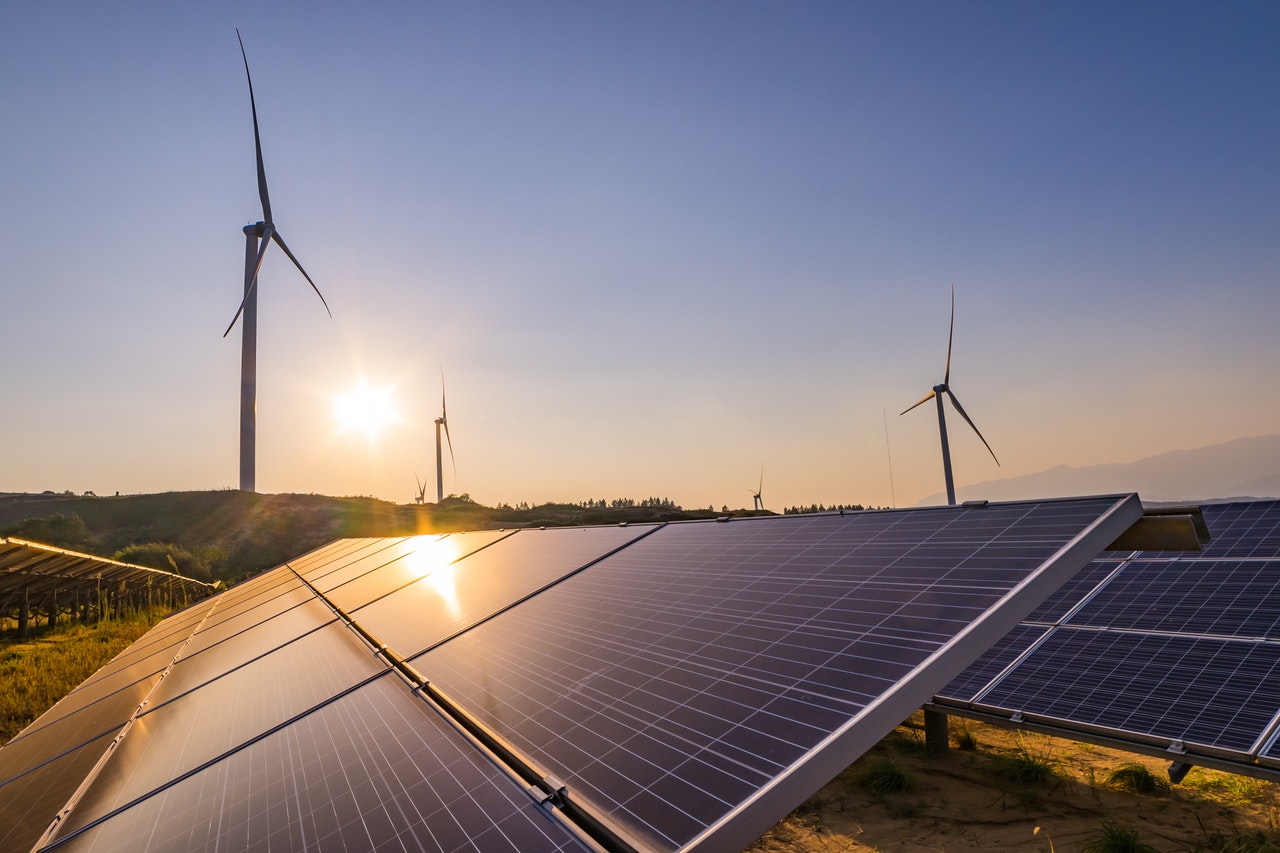Securing Tanzania’s clean energy future: How Tanzania can harness its renewable energy opportunities
With a high wind potential that covers more than 10% of its land and a solar power potential estimated to be 31,482 TWh for CSP technology and 38,804 TWh for PV technology and a global horizontal radiation of 4–7 kWh/m2/day , Tanzania is a step away from becoming a reckonable power giant in clean renewable future
By Moses Kulaba, Governance and Economic Analysis Centre
@climate change, energy transition series
Tanzania, like other developing countries, has perennial energy shortages and striving to find different ways of ensuring affordable and accessible energy supply to its citizens and economic development needs.
In order to secure affordable and accessible energy in the country, renewable energy is viewed as a viable alternative energy source. It is readily available, environmentally friendly and if harvested, produced and utilized in a modern and sustainable manner, it can help to eliminate Tanzania’s energy problems.
Tanzania’s power sector is dominated by state-owned TANESCO (Tanzania Electricity Supply Company Limited). TANESCO owns most of the country’s transmission and distribution network, and more than half of its generating capacity. The grid faces acute shortages and power outages due to excessive demand and a dilapidated infrastructure, making reliance on the current fossil and hydro based energy generation systems impossible to cope with the country’s energy demand.
Tanzania’s electricity generation comes mostly from natural gas (48%), followed by hydro (31%), petrol (18%) with solar (1%), and biofuels (1%). The traditional dependence on hydropower combined with the droughts that are affecting the country, often result in power supply shortages[2].
According to reports, Tanzania has a lot of renewable energy sources such as biomass, solar, hydropower, geothermal, biogas, wind, tidal, and waves. These sources are important for decentralized renewable energy technologies, which are ideal for the isolated nature of the settlements and are environmentally friendly. Despite their necessity, renewable energy sources are given low priority by both government and Households[1].
The World Economic Forum (WEF) reported the total sum of global investment into renewable energy has increased. This was supported by a 28% annual increase in investment from the United States (U.S), in 2019 totaling $54.6 billion[3]. Renewables cannot totally replace fossils such as oil, but increased investment shows increased potential contribution in the energy mix. The International Energy Agency (IEA) estimates annual clean energy investments will more than triple by 2030.
With its vast resources and location, there are opportunities for Tanzania to investment in its abundant solar and wind energy potentials. Perhaps, it is argued, the country can leverage its strategic position to scale up investment to generate more and at the same time position as a major supplier and user of renewable energy sources. So far, in Tanzania, solar energy is used as a source of power by 24.7% of the households with access to electricity.
Tanzania’s Solar Energy potential
 A study by Ahmed et al in 2017 suggested that Tanzania has an annual technical solar power potential in Tanzania was estimated to be 31,482 TWh for CSP technology and 38,804 TWh for PV technology. Potential solar energy resources are found in the central parts of the country[10] [1]. There are high solar energy levels ranging from 2800 to 3500 h of sunshine per year and a global horizontal radiation of 4–7 kWh/m2/day [1,70].
A study by Ahmed et al in 2017 suggested that Tanzania has an annual technical solar power potential in Tanzania was estimated to be 31,482 TWh for CSP technology and 38,804 TWh for PV technology. Potential solar energy resources are found in the central parts of the country[10] [1]. There are high solar energy levels ranging from 2800 to 3500 h of sunshine per year and a global horizontal radiation of 4–7 kWh/m2/day [1,70].
According to the World Bank, Tanzania has a solar energy potential greater than that of Spain and wind energy potential greater than that of the US State of California. With such great potential for solar energy resources, Tanzania is naturally appropriate for producing solar energy as a feasible alternative source for modern energy supply and rural electrification.
The solar energy market in Tanzania has drastically grown and increased over the last few years. Currently, the potential solar energy resources in Tanzania are used in different parts such as solar thermal for heating and drying and photovoltaic for lighting, water pumps, refrigeration purposes, and telecommunication. Solar energy is used mostly in rural areas with about 64.8% compared to urban areas with only 3.4%. The regions of Lindi, Njombe, Mtwara, Katavi, and Ruvuma lead in the use of solar power electricity in Tanzania[11]. Despite the increasing market for solar energy applications, there are fewer signs that the government is expecting to include solar PV in the national electricity mix in any substantial way in the future.
Tanzania’s Onshore Wind energy potential
 Tanzania has areas of high onshore wind potential that cover more than 10% of its land[5]. This is equivalent in size to Malawi and has greater potential than the US state of California, as reported by the World Bank report. There are areas with annual average wind speeds of 5–8 m/s[6] . These exist along a coastline of about 800 km with predominant surface winds, moving from south-east to northeast.
Tanzania has areas of high onshore wind potential that cover more than 10% of its land[5]. This is equivalent in size to Malawi and has greater potential than the US state of California, as reported by the World Bank report. There are areas with annual average wind speeds of 5–8 m/s[6] . These exist along a coastline of about 800 km with predominant surface winds, moving from south-east to northeast.
Based on the current research works, Tanzania has a lot of wind energy resources in the areas of Great Lakes, the plains, and the highland plateau regions of the Rift Valley. Wind energy evaluation indicates that areas such as Makambako (Njombe) and Kititimo (Singida) have sufficient wind speed for grid-scale electricity generation, with average of wind speeds 8.9 m/s and 9.9 m/s at the height of 30 m, respectively[7]. Small-scale off-grid wind turbines along the coastline and in the islands also possess great potential in Tanzania.
By 2017, at least four companies had expressed interest in investing in wind energy in Tanzania to build wind plants with a capacity of more than 50 MW. These companies included Geo-Wind Tanzania Ltd in Dar es Salaam, Wind East Africa in Singida, and Sino Tan Renewable Energy Ltd. and Wind Energy Tanzania Ltd in Makambako.
It was further reported that wind farms with capacities of 100 MW in Singida would be constructed under the corporation of the Six Telecoms Company in Singida, financed by the International Finance Corporation and Aldwych International in London, the United Kingdom. The project would cost US$286 million[8].
But generally, the uptake of investments in wind energy is still low. Compared to other renewable energy resources that attract investment, most projects have tried with little success to produce utility scale electricity from the wind energy. Tanzania’s renewable energy sector remains dormant with potential.
Recently, the government has indicated plans to review its national energy master plan with a view of integrating its energy mix with renewable sources. This provides an opportunity for government to be intentional and focused on scaling its renewable sources from solar and wind.
What is stopping Tanzania’s renewable energy sector
There are efforts and greenfield wind projects such as the Mwenga project , the first wind farm to ever be built in Tanzania was completed in 2020. According to the project directors, Camco Clean Energy, the 2.4MW project – which received a $1.2m loan from the UK Government-funded Renewable Energy Performance Platform (REPP) – was supposed to be connected to an existing grid network, providing energy security to communities across the country. However, there are gaps such as financing, infrastructure, storage, and government facilitation which potentially limit investment, scale up, use and benefiting from this potential.
- High investment costs: The cost for initial investment is high and the returns on investment are slow. With the dominance of TANESCO as a monopoly and absence of readily available Power Purchase Agreements for independent producers, project financing for renewable energies is still difficult.
- Misaligned government priorities; Government efforts have largely emphasized hydropower projects. Other renewable energy sources such as solar, thermal, wind, biomass, and biogas are under-prioritized so far due to different socioeconomic and political reasons
- Institutional and regulatory barriers; These are one of the main difficulties of developing renewable energy projects in the country, stakeholders say. According to Camco managing director Geoff Sinclair “It’s very difficult to get a bankable PPA signed, offtaker creditworthiness remains an issue, and tariffs are regularly and somewhat randomly reduced to levels that undermine commercial viability.
- Unmatched political will : The political will and support towards renewable energy over the past ten years has been on and off. After a major push in 2013 , the momentum appears to have dwindled. Many projects stalled and such as the 150 MW Singida Wind Power project are yet to be fully delivered. In 2013, the Vice-President of China Daliang International Group, Mr Xu Youliang, told Tanzania’s Prime Minister, Hon Mizengo Pinda, that this project would be ready and start generating power by 2015. To date this has not materialized. Similar projects such as the Same Wind projects are still on their drawing boards and political support has been waning. Despite the energy resources available in the country and the government’s pledge to invest in renewable energy, foreign investors feel discouraged from scaling up investments in Tanzania’s renewable sector.
- Overriding dissenting views on power of renewables in Africa: Further, this lukewarm and unpredictable stance towards renewable energy such as wind and solar seems to be a general attitude across the African continent. African governments have been slow to take on largescale renewable projects. Some of African political leaders, such as Uganda’s President Yoweri Museveni, have argued that renewable energy is not sustainable to meet the future global population energy demands. It cannot even meet or drive Africa’s development agenda.
- Unreliability and lack of technology for storage: Renewable energies such as solar and wind are largely dependent on whether and climatic factors and therefore unreliable as a source of power. The technology for storage has not advanced enough to guarantee continuous supply whenever needed
- Potential of land grabing and conflicts: Moreover a solar farm requires huge tracts of land, and this can or may potentially spark off a new wave of land grabbing by solar energy investors, triggering land conflicts across the continent. Africa could is a bystander in renewable energy technology. For Africa to benefit, investment in technologies and production of equipment, such as solar panels and wind turbines must be on the continent.
CSOs such as power shift Africa , Anti Coal Coalition[4] and others however argue that investment in renewable energy is economically viable, and can create jobs and increase access to energy to the poor and rural areas where access to the national grid is difficult. Significantly, investment in renewables will help Tanzania achieve its domestic transition and unlocking the country from a fossil future.
What can be done?
- Moving forward, therefore the mysteries surrounding renewable energy and Tanzania’s potential must be unlocked
- Government, along with other renewable energy stakeholders, should complement existing policies and strategies to address issues related to renewable energy development to ensure timely and sustainable utilization of the available resources.
- There is the need to provide a sound business and investment environment to local and foreign people who can provide capital towards renewable energy technologies and development.
- There should be more training and awareness made available to the public about how to invest and use renewable energy.
Tanzania can and must benefit from the energy transition by upscaling its potential by starting to roll out implementation. Stalled renewable projects should be implemented.
[1] Obadia Kyetuza Bishoge: The Potential Renewable Energy for Sustainable
Development in Tanzania: A Review, 2018 accessed at : https://www.mdpi.com/2571-8797/1/1/6/pdf#:~:text=Tanzania%20has%20a%20lot%20of,are%20environmental%20friendly%20%5B1%5D.
[2] https://www.trade.gov/energy-resource-guide-tanzania-renewable-energy
[3] https://www.weforum.org/agenda/2020/06/global-clean-energy-investment-research/
[4] https://www.theguardian.com/world/2022/aug/01/african-nations-set-to-make-the-case-for-big-rise-in-fossil-fuel-output#:~:text=African%20nations%20expected%20to%20make%20case%20for%20big%20rise%20in%20fossil%20fuel%20output,-Exclusive%3A%20leaders%20expected&text=Leaders%20of%20African%20countries%20are,documents%20seen%20by%20the%20Guardian.
[5] Tanzania Invest. Tanzania Has High Potential For Renewable Energy Projects, US Consulting Firm Indicates. TanzaniaInvest. 2015. Available online: https://www.tanzaniainvest.com/energy/tanzaniahas-high-potential-for-renewable-energy-re-projects (accessed on 15 April 2018).
[6] Kasasi, A.; Kainkwa, R. Assessment of wind energy potential for electricity generation in Setchet, Hanang, Tanzania. Tanz. J. Sci. 2002, 28, 1–7.
[7] Energy Charter Secretariat. Tanzanian Energy Sector under the Universal Principles of the Energy Charter. 2015. Available online: https://energycharter.org/fileadmin/DocumentsMedia/CONEXO/20150827- Tanzania_Pre-Assessment_Report.pdf (accessed on 8 May 2018)
[8] The Minister of Energy. The Speech of the Ministry of Energy and Minerals on the Estimates of the Revenue and Expenditure for Financial Year 2018/2019. 2018. Available online: https://www.nishati.go.tz/hotubaya-bajeti-ya-wizara-ya-nishati-kwa-mwaka-2018-19/ (accessed on 15 January 2018)
[9] The Economist. A World Turned Upside Down—Renewable Energy. 2017. Available online: https://www. economist.com/briefing/2017/02/25/a-world-turned-upside-down (accessed on 4 May 2018).
[10] Sarakikya, H. Renewable energy policies and practice in Tanzania: Their contribution to Tanzania economy and poverty alleviation. Int. J. Energy Power Eng. 2015, 4, 333. [CrossRef]
[11] https://www.thecitizen.co.tz/News/33pc-of-Tanzanians-have-access-to-electricity–report/1840340-3900298-9elccaz/index.html

